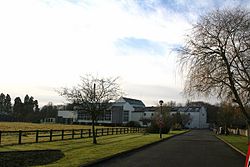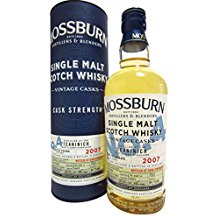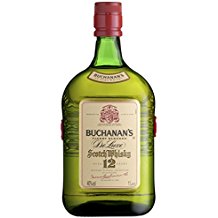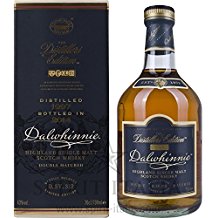Johnnie Walker ist die Marke eines schottischen Blend-Whiskys des Getränkekonzerns Diageo und der meistverkaufte Scotch Whisky der Welt.
 |
| Alter Logo |
Der Beginn unter John Walker (1820–1857)
Nach dem Tode des Vaters 1819 verkauften John Walker und seine Mutter die bisherige Familienfarm in der Nähe von Kilmarnock, und eröffneten mit dem Erlös eine Gemischtwarenhandlung im Ort. Das Sortiment des Geschäfts wurde nach einer Weile um Whisky erweitert. John wandte Blending-Methoden, die zu dieser Zeit für Tee eingesetzt wurden, versuchsweise auf Whisky an. Das Geschäft mit Whisky lief gut, nach der Zerstörung durch eine Überschwemmung im Jahr 1852 wurde das Unternehmen wieder aufgebaut. 1857 starb John Walker.
Mit dem Tode seines Vaters übernahm Alexander Walker die Geschäfte und die Aufgabe des Whisky-Blending. Die Reblausplage, die zwischen 1858 und 1863 fast den gesamten Bestand an französischen Weinstöcken vernichtete, kam den Walkers wie der gesamten schottischen Whiskyherstellung in dieser Zeit zugute.
Der bis dahin viel getrunkene Cognac, aber auch Wein und Brandy, wurden durch diese Plage deutlich teurer. 1860 wurde ein neues Gesetz erlassen, das es erstmals ermöglichte, neben Malt Whiskys auch Grain Whiskys zum Blenden zu verwenden.
Die neuen Geschmackssorten halfen den Verkauf zu erweitern. Im Laufe der Jahre wurden Außenstellen eröffnet, die erste 1880 in London. Weitere folgten 1880 in Sydney, in Südafrika und 1897 in Birmingham.
Als Alexander Walker im Jahr 1889 starb, übernahmen seine Söhne George Paterson Walker und Alexander Walker II. gemeinsam die Geschäftsleitung. Während sich George hauptsächlich um Marketing und Vertrieb kümmerte, übernahm Alexander vornehmlich die Arbeit des Blendens. Während dieser Zeit erwarb das Unternehmen etliche schottische Destillerien, so unter anderem 1894 Cardhu und 1916 Talisker.
1925 vereinigten sich die 1877 gegründete Distillers Company Ltd. (D.C.L.) mit John Walker & Sons. 1987 fusionierten D.C.L. und Arthur Bell & Sons zu United Distillers. Diese wurden zusammen mit den International Distillers & Vintners nach dem Zusammenschluss der Konzerne Guinness und GrandMet 1997 zu den United Distillers & Vintners (UDV). 2002 ging UDV komplett in den Konzern Diageo über. Im Jahr 2012 wurden von Johnnie Walker über 170 Mio. Liter Whisky verkauft.
- Red Label (Hauptmarke, ohne Altersangabe, damit mindestens 3 Jahre)
- Black Label (12 Jahre)
- Green Label (15 Jahre)
- Double Black Label (keine Altersangabe, höherer Anteil Islay-Malt)
- Gold Label (18 Jahre)
- Gold Label Reserve (ohne Altersangabe)
- Platinum Label (18 Jahre)
- Blue Label (ohne Altersangabe)
- Johnnie Walker XR 21 (21 Jahre)
Red Label (rot Label)
Old fashioned cocktail
Elusive Umami
Sherry Finish (acabado en barricas de Jerez)
Celebratory 200 Jahre






































